The Packrafting Life (aka A Beginner’s Guide to Packrafting)
In this multi-sport adventure podcast by Four Corners Guides, owner Lizzy Scully interviews FCG’s lead guides and industry experts. They share tips on getting started with bikerafting and packrafting, gear recommendations, and personal stories of learning these sports. The podcast also features fireside chats and adventure stories. It’s an open platform, and we welcome thoughts, suggestions, or comments. Email us at fourcornersguides@gmail.com, or follow us on https://www.instagram.com/fourcornersguides/ :) Find us on Podbean and Spotify. Show notes and transcriptions of our podcasts are available on our blog.
Episodes

Friday Oct 10, 2025
Friday Oct 10, 2025
In this ten-minute pod short, Four Corners Guides owner Lizzy Scully & filmmaker Deane Parker discuss the American Packrafting Association's new Be WaterWise series of 10 safety videos, recently launched through the APA Website & YouTube channel. Deane worked with the APA, the Packrafting Assoc. of New Zealand and numerous experts in the industry to develop these 10 short videos highlighting common hazards, practical mitigation strategies, and essential skills for paddlers of all levels. One of the main goals of these videos is to generate conversation. The APA would love to hear about your safety experiences, learnings and answer any questions you have. Join the conversation on YouTube, the APA Forum or Instagram.

Saturday Aug 30, 2025
Saturday Aug 30, 2025
In this episode, Lizzy interviews Rodrigo Alfonzo a Level 3 American Canoe Association Packraft Instructor and Level 4 Swiftwater certified, discussing his journey into packrafting and the significance of La Venta River, including its wonders, dangers and realities. They emphasize community involvement, safety and/or ACA training for local guides and communities, and the importance of preserving natural resources while promoting both Mexican and foreign tourism in Chiapas. Rodrigo shares future plans for his cooperative guide service, Packraft Mexico, training local guides and organizing events to enhance the packrafting experience in Mexico. You can also find Rod on @losabuelitoschiapas on Instagram.
Today we’ve got a special episode about one of the most storied and spectacular rivers in Mexico, which also happens to be one of the most misrepresented in social media. I’m here with Rodrigo Alfonso to talk about the wonders and dangers of La Venta River, his work with the Mexican government and environmental conservations agencies to protect the river and make it safer for those who utilize it. We’ll also talk about his latest project, Packraft Mexico, a co-op guide service that strives to both train and employ locals to guide La Venta and other rivers and to bring training opportunities to the local communities surrounding these rivers. Rod won the American Packrafting Association’s Golden Paddle award in 2025 for building the packrafting community in Southern Mexico. He has single-handedly inspired dozens of Mexicans to not only start packrafting, but also get the training they need to work on the rivers they already love and utilize. The guy is enthusiastic, fun to be with and highly motivated. Please meet one of my favorite new paddling partners, the dynamic Rodrigo Alfonso.

Wednesday May 28, 2025
Wednesday May 28, 2025
In celebration of Pride Month, I dedicate this episode of The Packrafting Life to queer folks. ~Lizzy Scully, CEO Four Corners Guides
And according to AI (but with some edits )... In this episode, host Lizzy Scully dives deep into the intersection of queer identity and the great outdoors. Joined by guests Justin Yoder, founder of LGBTQ+ Outdoors, and Justin Bickley, an ambassador & packrafter, the discussion explores how packrafting serves as a unique, meditative, and engaging way to connect queer folks with nature.
Beyond just exploring the serene beauty of rivers, the conversation highlights the vital role packrafting plays in building a supportive and inclusive LGBTQ+ community. Through personal stories and adventure plans, the episode sheds light on the inspiring initiatives like the Armida Horta Adventure Fund and LGBTQ+ Outdoors, which are focused on creating safe and welcoming spaces for queer people and women of color in nature.
Listeners will gain insights into the challenges faced by the LGBTQ+ community in outdoor activities, common misconceptions about queer people in the outdoors (like straight people don't think queer people like the outdoors! Except lesbians, who all drive Subarus. Seriously) and the transformative power of packrafting as a profound means of fostering connection, healing, and authenticity. The episode also touches upon how allies can contribute to creating a more inclusive environment and the importance of representation and visibility in the outdoor industry. Plus, how the outdoor industry can not only help increase participation, but also rake in the dough… 10% of Americans identify as queer... that's billions of dollars, people!
Finally, we touch on some serious dangers facing queer folk in the outdoors and in general... such as how our government is currently trying to erase and dehumaninze trans people and what can we do as part of the LGBTQ+ community to help them feel more welcome.
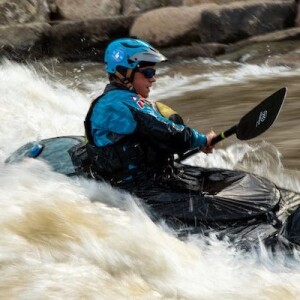
Friday Mar 21, 2025
Friday Mar 21, 2025
Introduction
In Episode 12 of The Packrafting Life (aka A Beginner’s Guide to Packrafting), Lizzy talks with Dan Thurber, primarily about leveling up in packrafting, but also about his paddling life and various other fun things. Dan was one of Lizzy’s first mentors in packrafting, teaching her much in various courses and also on a 14-day trip on the Grand Canyon. She continues to look to him for advice and guidance.
A Class V expedition paddler, Dan has solo paddled the Grand Canyon, and he has travelled around the world on kayaking and packrafting adventures. He’s been an instructor at the Swiftwater Safety Institute for a decade and he has a a master’s degree and now a career in river mechanics and modeling.
The American Packrafting Association says he is “an amazing instructor and advocate for river skills and safety.” He currently lives between the Pacific Northwest, where he works and paddles all summer and Tucson, Arizona, where he rides bikes and works all winter.
In this episode we talk first about his background in paddling and long-time career teaching. And then we dive into a topic he discussed at a workshop at the APA’s 2024 Roundup in Idaho, Leveling Up—when packrafters are ready to get to that next level in their paddling. Some of the questions and topics we covered include:
What does “Leveling up in Packrafting” even mean?
Understanding the Performance Zone. What defines the four zones in the “performance zone.” How to move back and forth between those. And how to be conscious of where you are at.
What are some common overestimations paddlers make that lead them to believe they are ready for harder water before they actually are?
In what ways is Leveling up different in the adventure sports of rock climbing, mountain biking, and skiing than it is with paddling rivers? And why is important to be conscious of these differences?
What’s are some useful things for paddlers to consider before deciding if they’re ready for the next step in difficulty?
What is the importance of mentors, courses or other forms of education in helping paddlers balance pushing themselves to improve while also staying within a safe learning curve? And how can paddlers find good mentors?
Why is catching eddies so important? And how does the skillset you need for catching eddies relate to the skillset you need for taking a 15-foot drop?
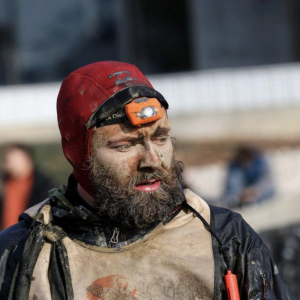
Friday Feb 07, 2025
Friday Feb 07, 2025
At the end of 2024 we snagged an interview with Alpacka Raft Design Engineer Dustin Partridge before he left for three months of packrafting in Patagonia, Chile. We're super stoked on Episode #11, the first full episode of 2025. Dustin is Alpacka Raft founder/owner Sheri Tingey’s right hand man, and a long-time employee at Alpacka. He came on board as the 15th or 16th employee and worked his way from flooring boats to learning how to build every piece and part of a packraft. And when it became apparently that both his pattern making and computer-aided design skills would make the company operate more smoothly and make Sheri’s job easier, she “stole” him from production. In this episode, Dustin and I talk about Alpacka’s design process, his mentorship with Sheri, the design of the Valkyrie versus the Mage versus the other whitewater boats (and which boat suit which kind of boater), and the work he finds most difficult and is most proud of at his job. We hope you enjoy this conversation as much as we did! PS. In addition to packrafting, Dustin also runs Tough Mudder races, and the mug shot we used for this episode is from one of those races.
Just a note to say we'll soon be rebranding this podcast as, The Packrafting Life, a new entity owned and operated by Lizzy Scully and Steve "Doom" Fassbinder that also includes all things related to The Bikeraft Guide and The Packrafting Survey.
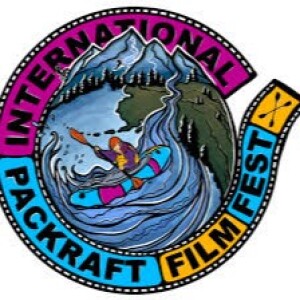
Thursday Jan 09, 2025
Thursday Jan 09, 2025
For more information on the film fest, to be a sponsor or to show the film in your town, please email packraftfilmfest@gmail.com or visit their website: https://www.packraftfilmfest.com/
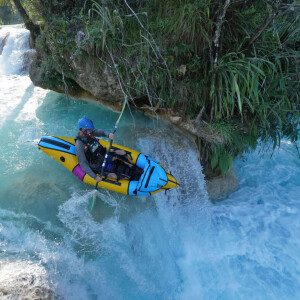
Wednesday Jan 01, 2025
Wednesday Jan 01, 2025
Please note this is a non-technical look at the Mage, where I compare how it *feels* compared to the Wolverine and the Gnarwhal. On January 6th, we’re publishing Episode #11 of, A Beginner’s Guide to Packrafting, featuring one of Alpacka Raft’s designers, Dustin Partridge. In it, Dustin offers a more technical description of the Mage versus the Valykyrie. You can also find out more technical specs about the boat on launch day on the Alpacka Raft website. I put this quick video and podcast together to answer your questions. And, yes, if you are a Class II to IV boater or an whitewater packrafter aspiring to run Class III and the occasional Class IV and who also wants to do backcountry adventures, get the Mage. ~Lizzy
Correction: The backband configuration is different on the Wolverine compared to the Mage. There are only three points of contact on the Mage versus four on the Wolverine. Thus, there are fewer moving parts. As well, the Mage has a piece of webbing instead of the bungees found on the Wolverine. I like the Mage configuration much better. I always found the bungees annoying to deal with, especially when using the Sockdolager Equipment Seat Bag, which is now a standard feature on my boats. It appears that Alpacka is using this new configuration on all their whitewater boats. It's a small, but noticeable improvement.
Technical specs from Alpacka: https://alpackaraft.com/products/mage Video by Dustin: https://vimeo.com/1035769419/786623251f
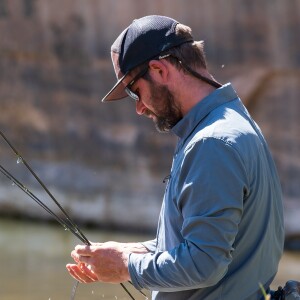
Thursday Dec 12, 2024
Thursday Dec 12, 2024
In Episode #10 of, A Beginner's Guide to Packrafting & Bikerafting, we talk with Alpacka Raft co-owner, Thor Tingey, about the hunt packrafting and packraft fly fishing scene. We start by discussing his background in those two activities and how Alpacka Raft’s hunt and fish boats developed along with changing hunting trends generally, along with Alaskan trends toward minimalism and packrafts as a part of the float fish and hunt market.
Fewer and fewer people are hunting, says Thor. But the reality is the same numbers of animals are being killed because the people who are doing it are more and more dedicated, core hunters, as opposed to those who are casually digging their rifles out in October to go hunting. “These are guys who think all year long about how they are going to go hunting,” Thor adds. “We have seen over 20 years a way more dedicated population of outdoor enthusiasts who are focused solely on hunting.” And “they want the full experience. They’re physically training. They’re buying fancy supplements and backcountry meals. It’s a big activity for them.”
What do we cover in this interview:
What has inspired the changes in the hunting community? A broad mix of marketing, equipment and culture. “And the reality is the more you show people this is a really cool way to do this, the more they will want to do it.”
The problems Alpacka has solved with its packrafts for hunters and anglers. The first goal with big game hunting is, can the boat carry out a harvested animal? Do we have enough physical space in the boat to carry an animal? Alpacka’s Forager will do it, and the Ranger and Mule are both excellent for carrying up to a moose-sized animals. But those three boats have only been around for about ten years. Alpacka solved that problem for multiple sizes, while companies like Pristine Ventures solved that problem for people needing to carry bigger loads.
The second thing Alpacka looked at was: How were people going to use the boats? They’ve always focused on hiking in and out with the boats. And that has become even more important with the expense of flying bigger boats, gear, people and harvest in and out of the backcountry on backcountry planes. Packrafting, Thor says, has become increasingly popular because it’s simply more affordable than flying planes. So people are using them more often for float trips. “You can save the price of the packraft just on this first flight that you do.”
The company also considers the walkability of the packraft. Can they easily be carried into a river from a gravel bar, small lake or other small place where a plane might land? People are wanting to get deeper and deeper into the backcountry. So the less they carry, the easier they can access these hard-to-reach places. “It’s a great thinner,” Thor explains. “It’s amazing how many fewer people you see who are willing to hike even a mile to get to better hunting. Even here in Colorado, if I get a mile away from the road there are 90% fewer hunters.”
He also makes recommendations to hunters who are just getting into boating, including things they should consider as far as safety and training and practice before they get out hunting in the backcountry. He also discusses the gear people should consider.
He talks about his exploratory missions into the backcountry. He says: “We are always looking for rivers that have good whitewater and good hunting. If we can find a Class III or IV canyon, we go there because nobody else will be there.” This illustrates the expansive possibilities of packrafts. The more you learn and the better you get at paddling, the more access you will actually have.
The last ten years he’s been blown away by the small number of absolutely incredible fishing locations that he and friends have been able to locate that no-one else is fishing. He’s super tight lipped about these spots. But they do exist around the world, and he encourages people to get out there and find these spots on their own.
But he also discusses how it’s not necessarily finding the fish or getting the animal that is important. “People really go out there and look for first ascents or descents, and there’s nothing wrong with that,” he explains. But, like his friend Brett Davis says, “sometimes it’s the first time for me” being there in that place. While Thor says he does “chase beta” with the best of them, he also loves the experience of just going and doing something, not knowing what’s around the corner. “I love that experience. It’s what drew me to packrafting, and what draws me to a lot of outdoor activities.”
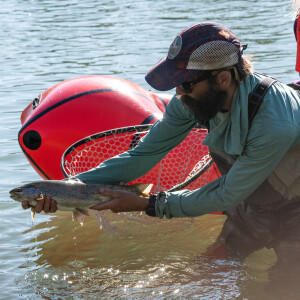
Tuesday Nov 05, 2024
Tuesday Nov 05, 2024
In Episode #9 we dive into packraft fly fishing with guide Thad Ferrell. Thad was an early adopter of packrafts, and a longtime cyclist, rock climber and fly fisherman. He recently packrafted the Kongakut River in the Arctic National Wildlife Refuge in Alaska to fly fish for char. In this episode we talk about how Thad got started with fly fishing and guiding, his multi-sport adventures, his new venture to teach packraft fly fishing on the Dolores and Animas rivers in Colorado in 2025, some tips and trips for packraft fly fishing and, of course, his trip to the Refuge. Stay tuned because in episode #11 we'll be chatting with Thor Tingey. Thor and Sheri Tingey spearheaded the development of the world's first fishing-focused packrafts. We hope you enjoy episode #10!
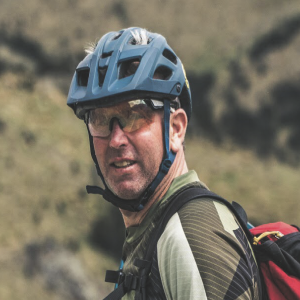
Wednesday Oct 09, 2024
Wednesday Oct 09, 2024
In Episode #8 of, "A Beginner’s Guide to Packrafting & Bikerafting," Deane Parker talks about how he got into pairing bikes and packrafts on pretty hardcore whitewater from the get-go, in addition to his history kayaking and rafting Class V rapids, his raft guiding business in the 90s, his mountain bike adventures, his filming projects through Deane Parker Adventure Channel, and his family farm. One of the most renown whitewater bikerafters in the world, Deane is also an all-around super nice guy. We always have fun chatting with Deane. And after eight years of working with him on various projects, we really look forward to meeting him in person February 15-25, 2025 when we finally visit New Zealand for a 10-day expedition packrafting course Four Corners Guides is running with Deane and Huw Miles of Packrafting Queenstown. (58 views before changing it over to an MP3 for Spotify).

Bike.Pack.Raft





